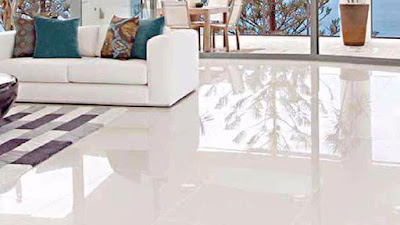Difference between Glazed Tiles and Unglazed Tiles
Glazed Tiles Means
Many people take the word "glazed" as meaning light or shiny. In the tile industry, however, the term is used to refer to the enamel coat or liquid glass that is applied to virtually all ceramic and porcelain tiles. Glaze is not a description but rather a material.
The majority of tiles are vitrified. The glaze can be a glossy or matt finish. There are plenty of tiles available in both finishes-for example, plain white tiles. Either matt white tiles or glossy white tiles will be described as glazed with both of them.

Unglazed Tiles Means
The tiles are made from clay that was fired in a kiln. To add glaze it is done until the tile reaches the kiln. The glaze then fuses in during the firing process to the top surface of the tile's clay body. If no glaze was added, the resulting tile is called "unglazed." That is the basic distinction between glazed tiles and unglazed tiles.
Unglazed ceramic and porcelain tiles gain their color from mineral deposits found in the clay from which the tiles were made, or from natural pigments being applied. These pressed pigments can be shaped to shape a pattern, and the patterns run right down the tile, as opposed to being just a design on the tile's surface.
Since unglazed tiles do not have liquid glass protective coating, liquid will be absorbed which will result in stain. Thus, a protective sealant must be added to unglazed tiles, which sometimes may need re-coating. For contrast, the glazed tiles would remain non-absorbent for a lifetime. For contrast, the glazed tiles would remain non-absorbent for a lifetime.
Specialist, unglazed matt porcelain floor tiles are often chosen for commercial rooms, for example in hotel lobbies, airports, etc. These floor tiles are incredibly heavy, very thick and costly. Since the color and pattern runs straight down through the tile, the tiles may be aged with heavy usage over time, but the original color and pattern would still be noticeable.
Unglazed tiles will always look matt, with one notable exception: polished porcelain tiles which start life as unglazed tiles. No glaze exists in spite of their highly reflective, mirror-like nature. Their high shine is accomplished with large scale buffer polishing.
Difference between glazed and unglazed tiles
Production Technique
- A liquid glass coating is bonded to the top surface of the tile in one kiln at very high temperatures.
- While unglazed tiles no coating
Stain Resistance
- The non-porous glaze does not retain liquid and is similar to waterproof glass.
- Ceramic can absorb stain and liquids. Porcelain can absorb stains.
Appearances
- An endless selection of colors, finishes, textures and designs accomplished using inkjet printing.
- And unglazed tiles are a real, earthy appearance
Thickness
- Glazed tiles are less dense and thick
- Unglazed tiles are denser and thicker
So, there are tiles with glossy glaze, matt glaze and with no glaze but matt finish and with no glaze but polished with high, glossy shine.
You can also enquire us at info@tileprint.co.in



Comments
Post a Comment